Introduction
Realizing the worth of a company is a crucial aspect for entrepreneurs, investors and stakeholders alike. Whether its deciding when to sell the business enticing investors or evaluating its overall condition business valuation offers valuable insights that guide smart decision making and strategic expansion. Precise valuations play a role not just in negotiations but also, in shaping the companys strategic course in the fast evolving market environment of today.
They provide a view of strengths and areas for growth to support stable financial results and sustainable success, in the long run.
In real life situations demonstrate the significance of evaluations and strategic adaptations. As an illustration a steel recycling business experienced advantages by reviewing its insurance claims thoroughly and changing providers leading to savings and a deeper insight into its financial obligations. These instances highlight the role of detailed business assessments, in building enduring customer connections enhancing client loyalty and boosting profits.
Startups must grasp valuation methods well since the approach chosen largely hinges on the companys growth phase and accessible information at hand. The Berkman Method and other strategies offer a way to assess early stage startups by honing in on factors like the feasibility of the idea presented as well as the competency of the team and progression in product development. These techniques create an approach to gauge potential prospects and steer future developments towards success. In essence a thorough business appraisal not captures current value but also becomes a valuable asset for strategic planning, in upcoming ventures and fruitful negotiations.
Why Business Valuation is Important
Realizing the importance of knowing the worth of your company is crucial, for purposes. Whether you're thinking about selling it or looking to attract investors or simply assessing how well its doing overall. Carrying out an assessment of your organization can reveal both its strengths and aspects that may require enhancement. Helping you make well informed choices that can boost its success and financial performance. This step becomes especially vital during negotiations as it guarantees that you're presented with proposals backed by precise evaluations.
In today's evolving market environment, having an precise assessment can significantly improve your strategic decision-making process. For example the M&A Sentiment Index provides information, on the inclination of dealmakers to participate in mergers, acquisitions and divestitures. This resource offers an dependable viewpoint assisting entrepreneurs in maneuvering through the intricacies of the market scene.
Studying real life examples emphasizes how being transparent and making decisions are crucial factors to consider.Diving, into a case where a steel recycling firm reanalyzed its insurance claims records and transitioned to a service provider that offered cost breakdowns showcases this point. This decision led to cost savings and a more precise comprehension of their spending patterns. It underscores the advantages of conducting assessments and making strategic changes.
Moreover; effective discussions often lead to creating lasting relationships with clients and an increase in customer retention rates and profit margins. This highlights the significance of evaluations in fostering ongoing growth and financial stability.
Industry experts stress the significance of understanding valuation techniques for startups specifically, as the valuation approach selected depends on the phase of development and data availability. In the case of early stage startups methods like the Berkus Method provide a way to assess potential by concentrating on essential elements such as idea viability, team strength and progress, in product development.
A conducted company evaluation provides more than just a glimpse of your current worth – it also serves as a significant strategic resource for upcoming growth opportunities and successful negotiations.
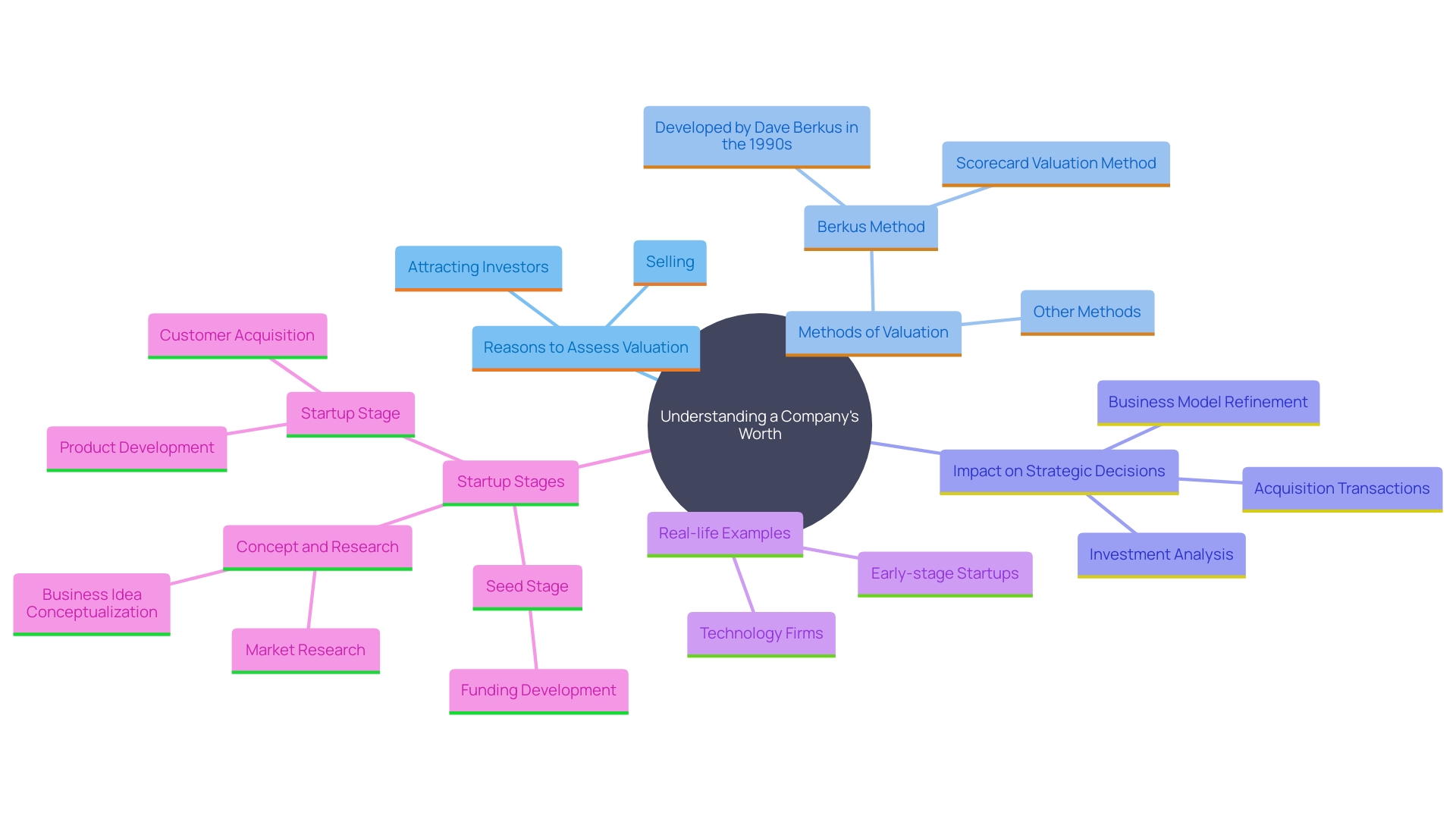
Key Factors Influencing Business Valuation Costs
Understanding the costs associated with assessing the worth of a company is essential for financial planning objectives. Various elements impact these expenses such as the scale and intricacy of the business and the sector it belongs to. For example, a technology startup at this stage will need distinct appraisal services and face different expenses compared to a well-established manufacturing company. Additionally the purpose of the assessment. Whether its, for assessing investments evaluating acquisitions or complying with regulations. Also has an effect.
Valuation techniques can vary significantly based on the circumstances; for example, the Berkus approach is frequently utilized for evaluating startups prior to revenue generation, while established firms with strong financial histories may choose more traditional approaches instead. The choice of a technique largely depends on the company's position regarding growth and the type of data that is accessible for analysis.
'The position of a site can also affect the costs of appraisal services. For example, in regions with high expenses, companies may face higher fees than those located in countryside areas. Additionally, the expertise of the evaluator contributes to this. Seasoned specialists typically request compensation, but they offer more accurate and significant evaluations.'.
When entrepreneurs understand these components sufficiently, they can organize their finances more effectively and choose a suitable assessment technique that meets their personal needs and goals.
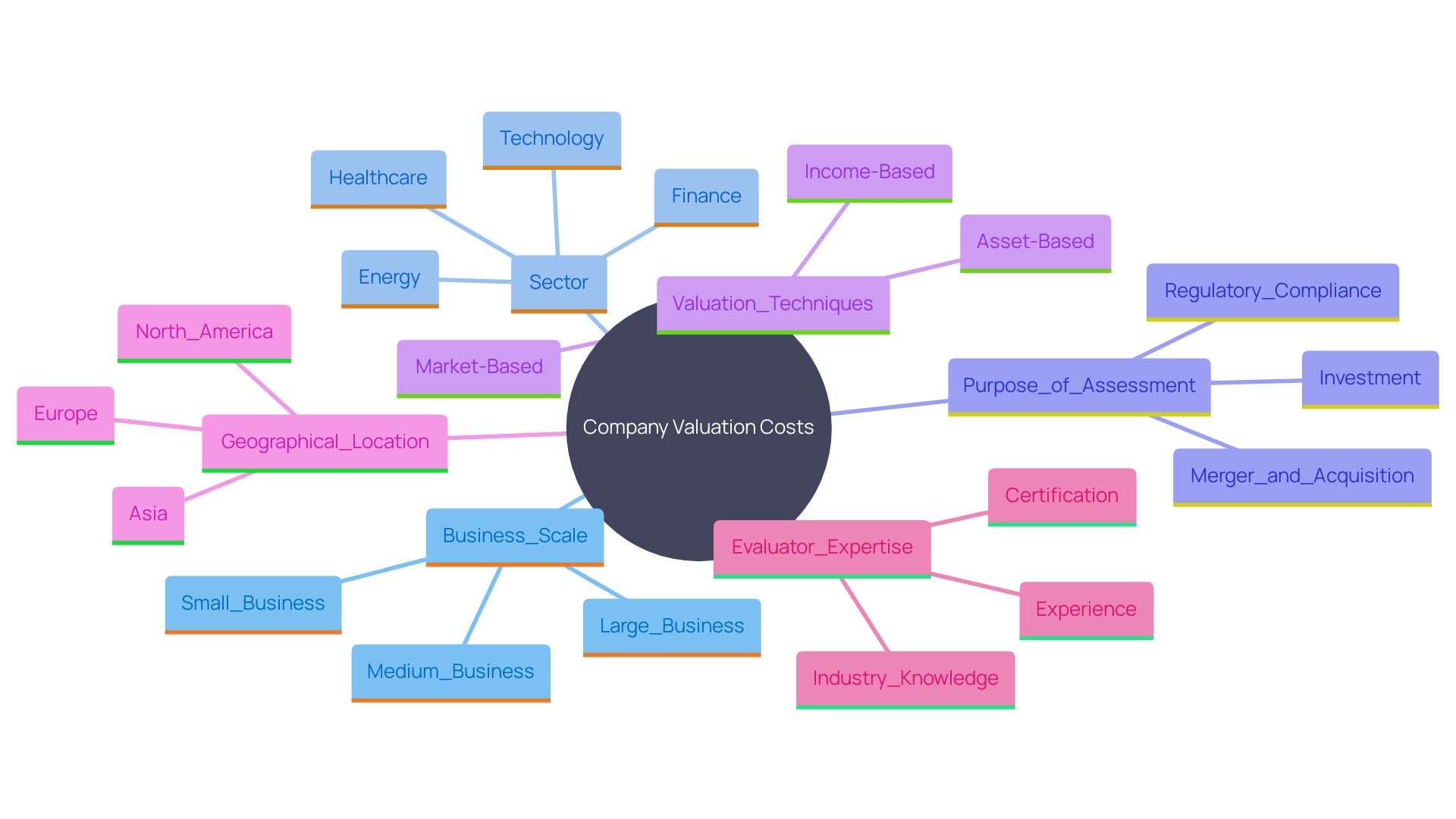
Business Valuation Methodologies
Various strategies can be employed to evaluate the value of a company; each approach has its advantages tailored to distinct circumstances. The choice of which approach to adopt generally relies on the nature of the enterprise and industry benchmarks, along with the particular factors affecting the valuation process. Understanding these strategies aids you in selecting the most suitable course of action for your needs.
In the evolving realm of startup ventures, the process of assessing worth plays a vital role in evaluating investments and acquisition deals. The approach selected is greatly influenced by the startups growth stage and the data, at hand.
During the phases such as the Concept and Research stage of a project's development process, attention may be on conducting market research and evaluating the feasibility of the concept. Transitioning to the Seed Stage where funding is required to advance the idea approaches such as the Berkus method could prove beneficial as it places value on aspects of the venture. Originated by investor Dave Berkus this technique offers evaluations for startups in their stages without revenue rendering it an essential resource, at this particular juncture.
As the startup progresses towards its launch or Startup Stage milestone and shifts into enhancing its product or service offerings while connecting with initial customers and establishing a sustainable model becomes the central focus of attention, during this phase of growth.
By grasping these approaches, in depth individuals involved can precisely evaluate the genuine worth of an enterprise streamlining the assessment procedure and guaranteeing knowledgeable decision making.
Income Approach
The Discounted Cash Flow (DCF) method emphasizes assessing a company's revenue potential by calculating the present worth of expected cash inflows while taking into account elements such as inflation and opportunity costs that render a dollar now more significant than a dollar later. This approach highlights the necessity of forecasting and thorough financial analysis when establishing an enterprise's worth using DCF. In this process we forecast cash inflows by considering factors such as profits after expenses and taxes paid out to the government as well as changes in day to day operational assets and long term investments made by the company itself. The precision of these forecasts is essential since they impact the final worth of the company. Furthermore it is important to grasp how easily revenue streams can be increased over time while ensuring they are reliable for industries like software where future cash flows crucial when evaluating financial well being. Maintaining a growth in profit margins could signal that the company is running efficiently and has established a solid position, in the market which consequently boosts its overall worth.
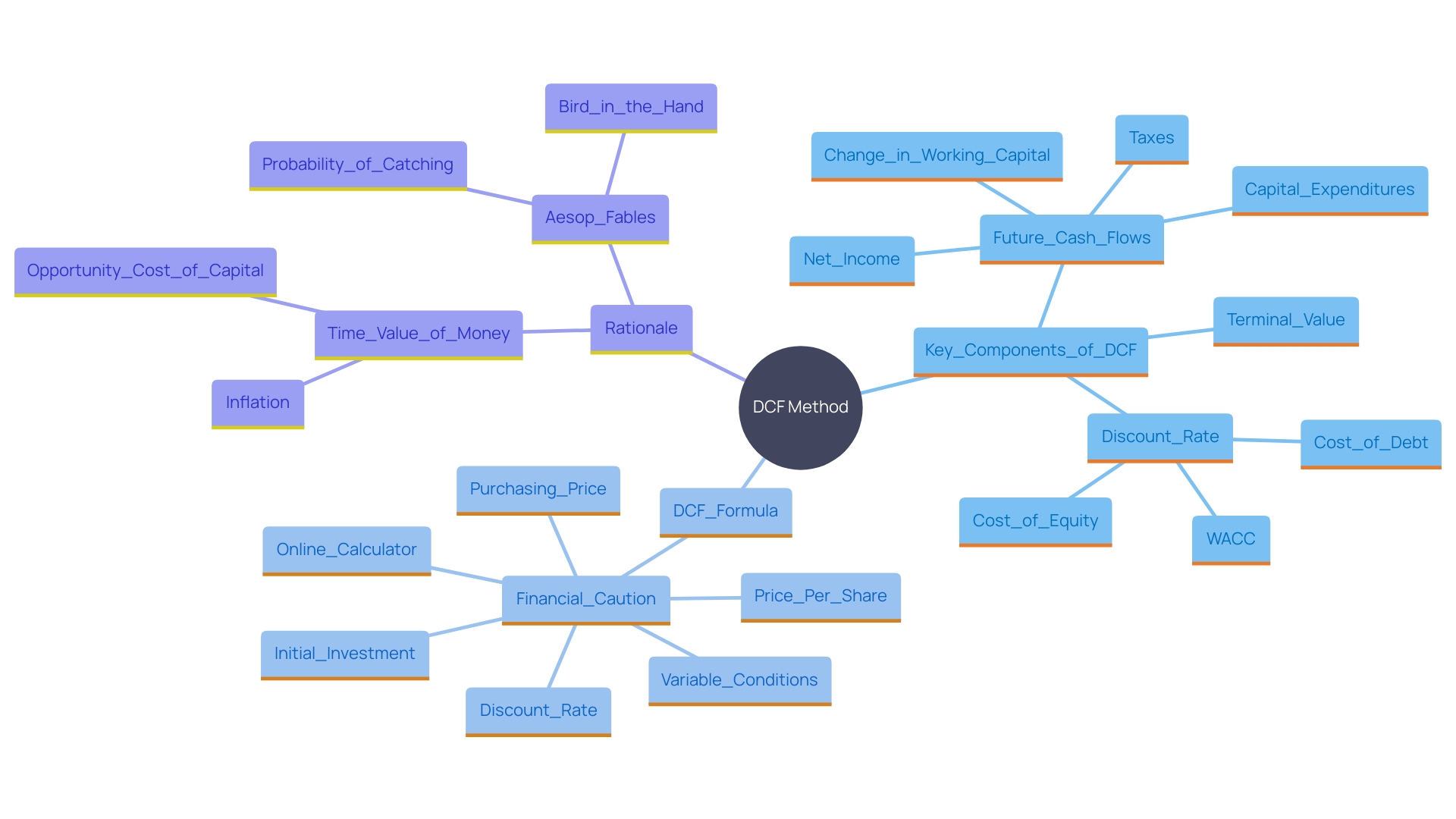
a. Capitalization of Earnings Method
This technique determines the value of an enterprise by applying a rate of return to the projected earnings. Is particularly advantageous for enterprises that have consistent income flows and stability. By looking at performance data as a base for valuation process simplifies it greatly. In the words of Craig West from Capitalize. It is essential to comprehend how modifications, in elements of an enterprise influence its worth precisely over time. Therefore, this approach provides clarity and guidance by assisting entrepreneurs in concentrating on aspects that play a major role in expansion while steering clear of those that do not enhance productivity. The advanced predictive capabilities integrated into these valuation tools guarantee that business assessments stay reliably precise and current by capturing real time shifts in industry conditions as well, as financial performance and strategic expansion metrics.
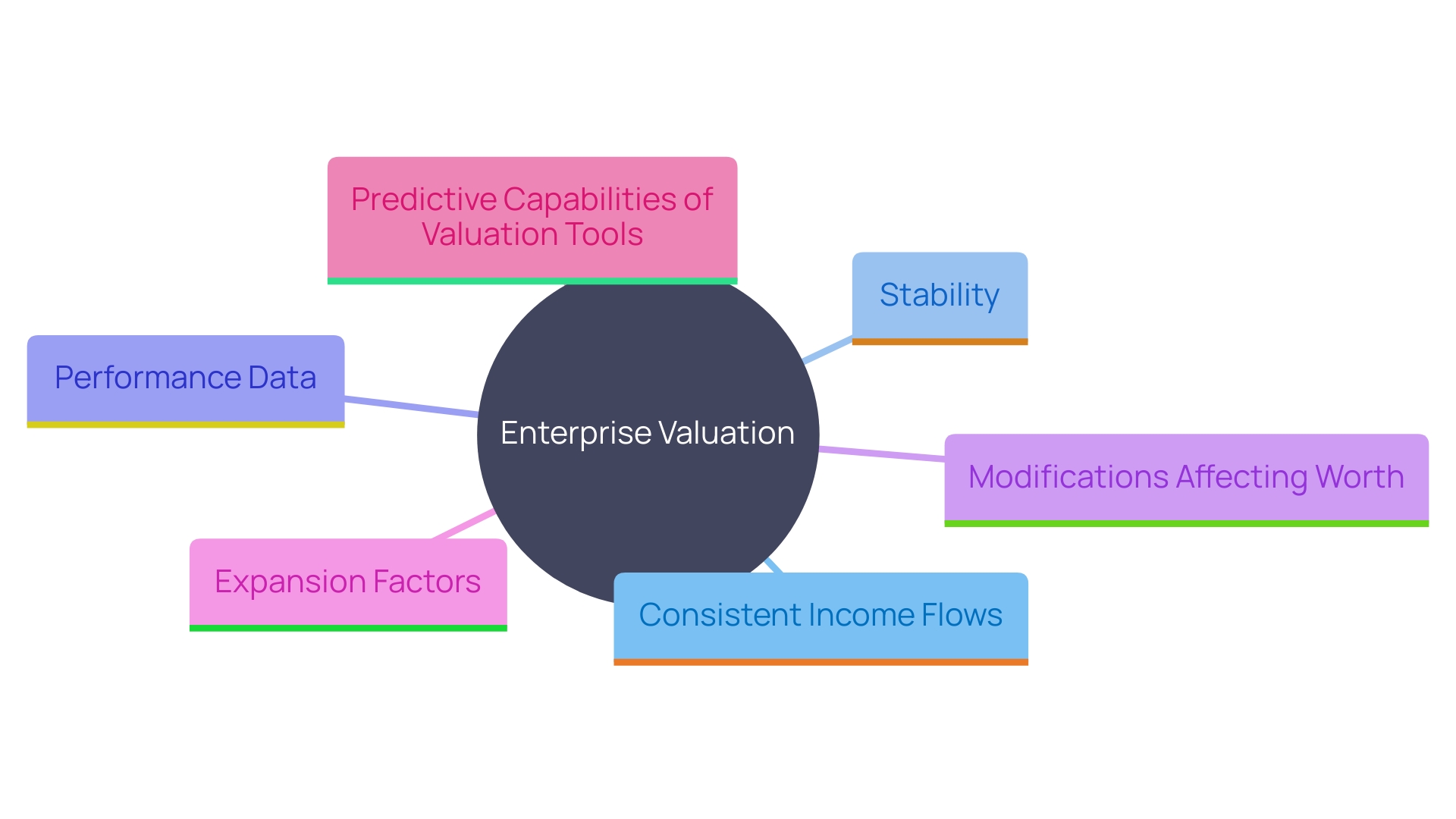
b. Discounted Cash Flow (DCF) Method
The Discounted Cash Flow (DCF) technique assesses the worth of a company by forecasting its cash flows and modifying them to present worth by taking into account the time component of money involved in the process. This strategy is particularly beneficial for enterprises with fluctuating revenue trends and growth paths. DCF can be applied in approaches based upon the definitions of free cash flow and financial leverage as well, as the management of tax implications. The three common approaches utilized in Discounted Cash Flow (DCF) analysis are the Discounted Equity Free Cash Flow technique, the Discounted Enterprise Free Cash Flow process with the Adjusted Present Value (APV) technique, and the Discounted Enterprise Free Cash Flow strategy using the Weighted Average Cost of Capital (WACC) approach. If consistent factors and assumptions are applied, each approach should lead to the assessment result. However, discrepancies in cash flow and cost of capital estimations can lead to assessments. Therefore maintaining consistency is crucial, in models that involve financial leverage. By predicting upcoming cash flows and choosing the right discount rate companies can gain valuable insights into their worth and make well informed financial choices.
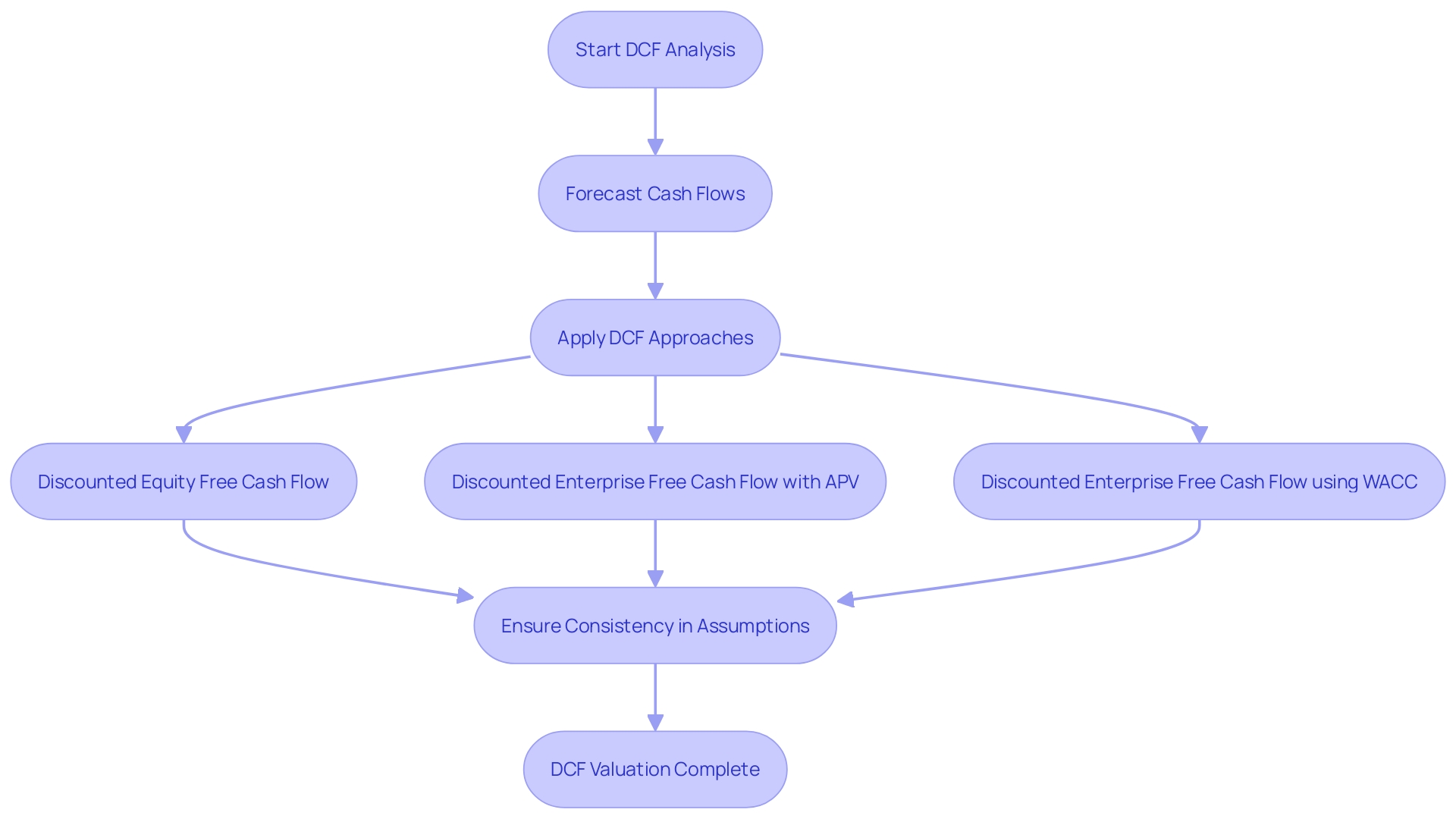
Asset Approach
The asset-oriented approach of determining a company's significance focuses on evaluating its core resources as the key factor in assessment. This technique proves beneficial for enterprises possessing tangible or intangible resources as it offers an accurate appraisal based on either the liquidation price or the expense of replacing these resources. For instance, certain companies, with real estate holdings, advanced technology systems, or exclusive software solutions, stand to gain from this methodology. By examining each resource's worth, company owners can gain a comprehensive understanding of their organizations' overall significance. This method aligns with the International Valuation Standards (IV) that emphasize the significance of transparency in disclosing asset costs for accuracy in appraisal tasks. By utilizing the asset approach in this context, it provides a systematic procedure to ascertain the worth of an enterprise by ensuring all essential assets are included and evaluated correctly.
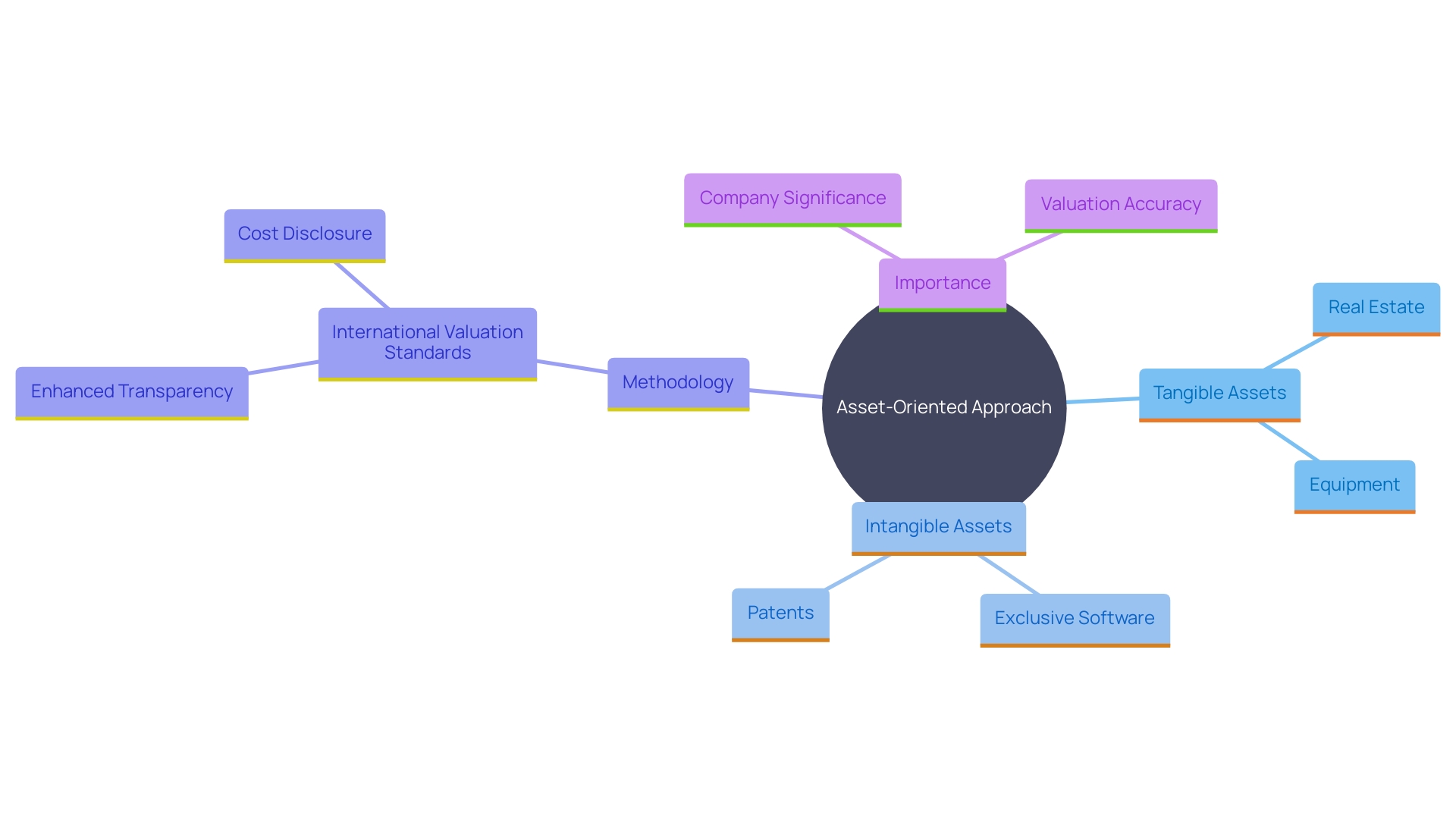
a. Replacement Cost Method
The replacement cost technique assesses the cost needed to recreate the existing assets of a business accurately; this is particularly useful for companies with substantial tangible resources like manufacturing firms and real estate enterprises as it offers a precise and current valuation of their worthiness. Moreover this strategy is essential, in determining insurance requirements to guarantee coverage for all physical properties. When it comes to insurance evaluations in share transactions such as during due diligence processes of sales agreements for example; understanding the replacement worth plays a role, in deciding whether to merge the risks of the acquisition target into current schemes or maintain separate policies for them instead. This thorough examination ensures that both the buyer and seller can make informed strategic decisions regarding asset assessment and insurance coverage.
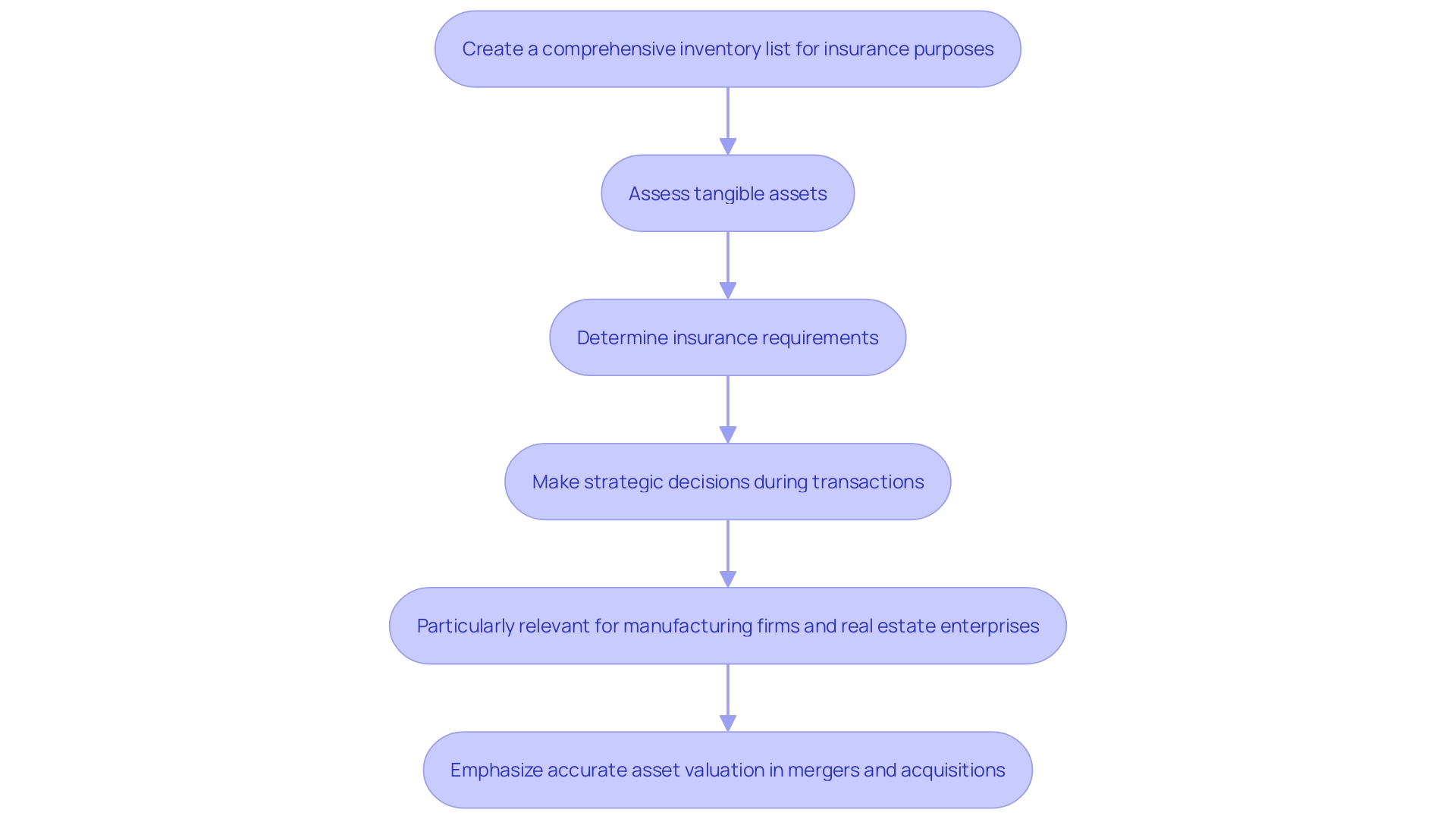
b. Liquidation Value Method
The liquidation worth method determines the amount of cash that could be acquired by selling all assets and settling liabilities—an evaluation in challenging circumstances. This approach offers a perspective on worth in worst case scenarios as demonstrated by recent incidents. For example, federal regulators have given Liberty Bank, in Utah an ultimatum; sell off assets to avoid receivership. In a manner related to Rite Aid's bankruptcy situation and the way they engaged liquidators to meet lenders' requirements demonstrates the real-world importance of grasping liquidation assessments in practical scenarios such as this. These instances emphasize the importance of comprehending the idea of liquidation worth, for enterprises facing difficulties as it assists stakeholders in gaining a clearer insight into potential outcomes.
Market Approach
The market approach evaluates a business's worth by examining the prices at which comparable companies in the industry were sold. This approach is advantageous because it provides context and establishes a standard for valuation. Through studying market trends and recent deals made in the industry sector investors can acquire knowledge, about the competitive environment helping them to evaluate a company's actual value more precisely. This method is particularly beneficial for businesses since it takes into account the ever changing nature of the industry and the different phases of growth. Starting from the idea generation and research phase to the seed and startup stages. Its crucial, for entrepreneurs and investors to grasp these milestones to make informed choices that enable them to effectively maneuver through the valuation terrain.
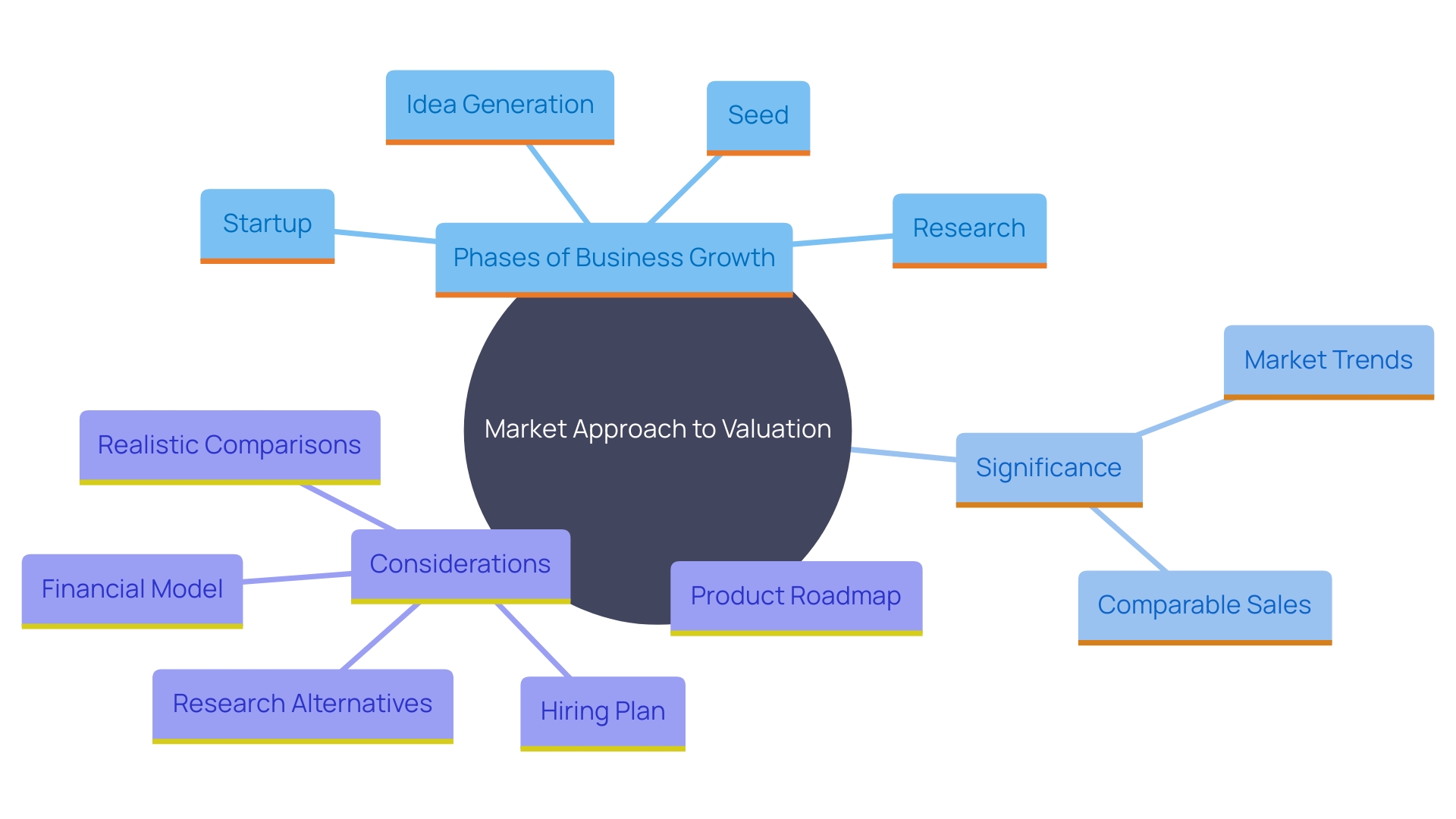
a. Market Capitalization Method
The market capitalization method evaluates a firm's worth by considering its stock price multiplied by the total outstanding shares it has in circulation. This approach provides a perspective on how investors interpret the business worth as it indicates market sentiment and performance amid fluctuating market conditions. For example. Firms showing earnings growth and operational efficiency similar to the 'Insurance Berkshire' are often given greater market assessments due to their proven history and investor confidence. By grasping how the market views things and gauging stakeholders perspectives on a company growth and profitability prospects are key, for making informed decisions moving forward.
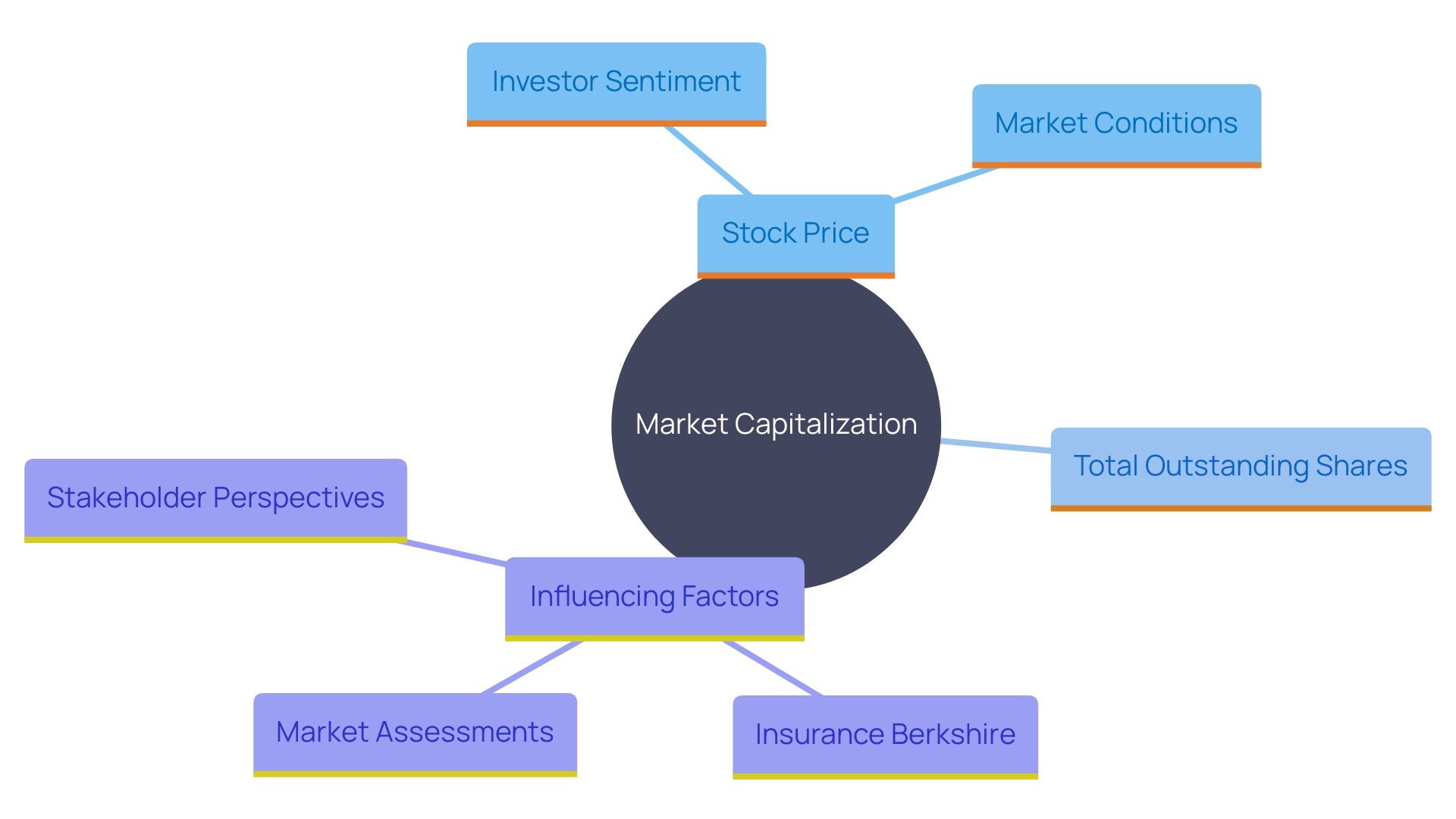
b. Times Revenue Method
Utilizing a revenue multiple to assess a company's worth is a common practice in specific sectors where revenue is a crucial indicator of performance. This approach is commonly employed in sectors such, as real estate and software firms. In the field of real estate the valuation is greatly influenced by the ability to attract and retain independent sales agents as they are considered the most valuable assets of the business. Although encountering certain challenges, numerous real estate brokerage firms have succeeded in adapting to market circumstances by employing the income approach to standardize operational modifications and enhance their overall worth.
Software companies must evaluate their income sources to comprehend their significance completely in the current market environment. They are transitioning from one-time purchase models to integrating subscription options, licensing fees, and revenue from transactions. The reliability and duration of these income channels are elements as they offer insight into future financial outlooks and the overall economic stability of the enterprise. Furthermore, the scalability of the revenue structure suggests growth possibilities, making it a useful measure for assessing a company's worth.
c. Earnings Multiplier Method
This method of valuation includes using a factor to calculate the value of the enterprise based on its earnings rather than other elements like assets or liabilities alone. It is especially useful for industries that rely heavily on recurring revenue streams such as subscriptions and licensing fees. 'The stability and predictability of these income sources provide information about future cash flows and the overall financial soundness of the organization.'. Moreover, the potential for growth in revenue suggests an indication of scalability, making this approach particularly well suited for enterprises with consistent and varied earnings. In the software field, as an example companies that regularly increase their profits are typically seen as valuable because of their efficiency and strong market presence.
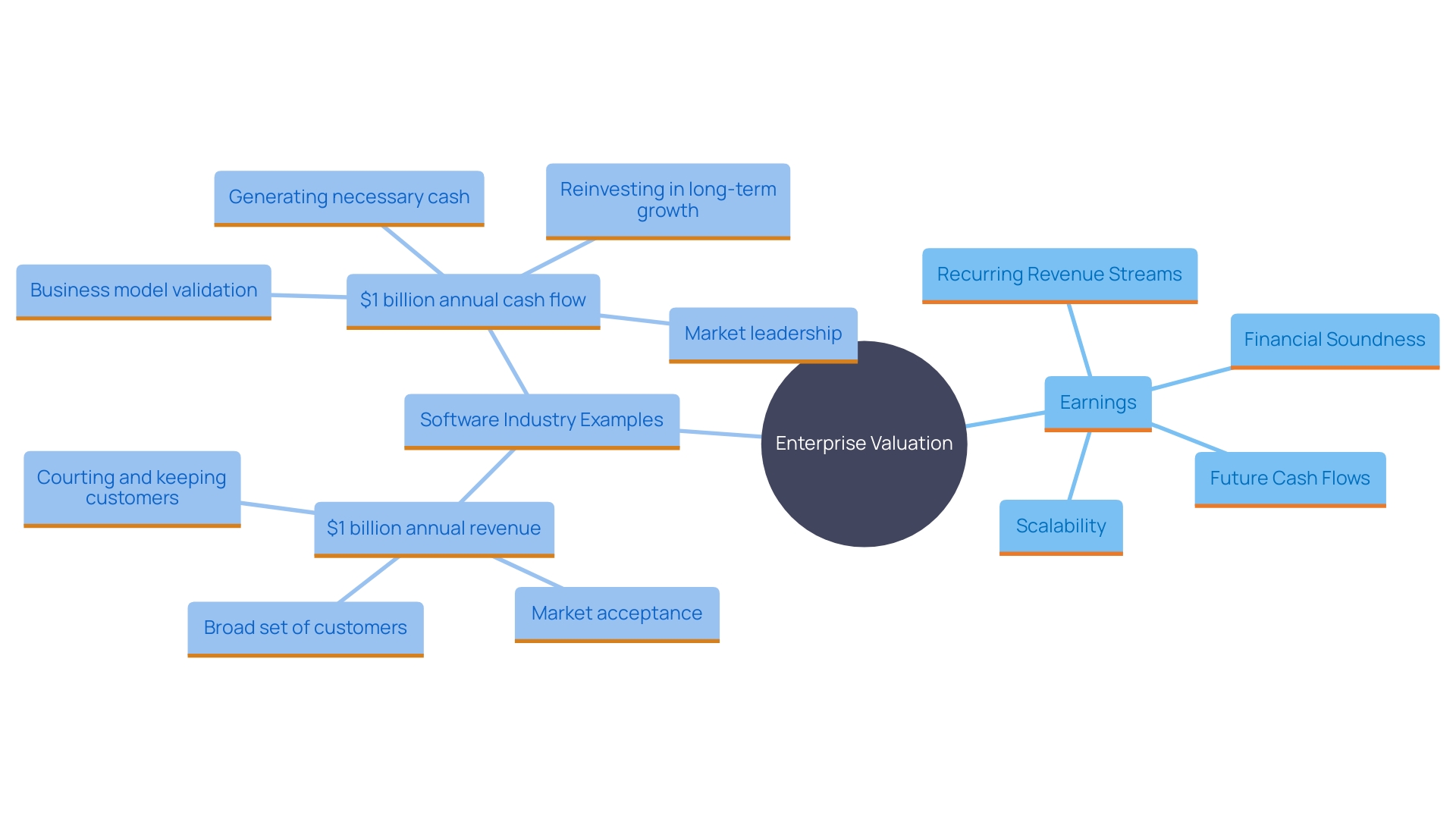
d. Industry Method or Rule of Thumb
In sectors like Shark Tank and other environments for small enterprise proprietors utilize industry specific guidelines to estimate their company's worth promptly through common practices in their field of expertise rather than relying solely on financial metrics such as profitability and market conditions. This method assists owners in gauging an approximate value of the enterprise in the early stages such as conceptualization and research phases or, during seed and startup stages.
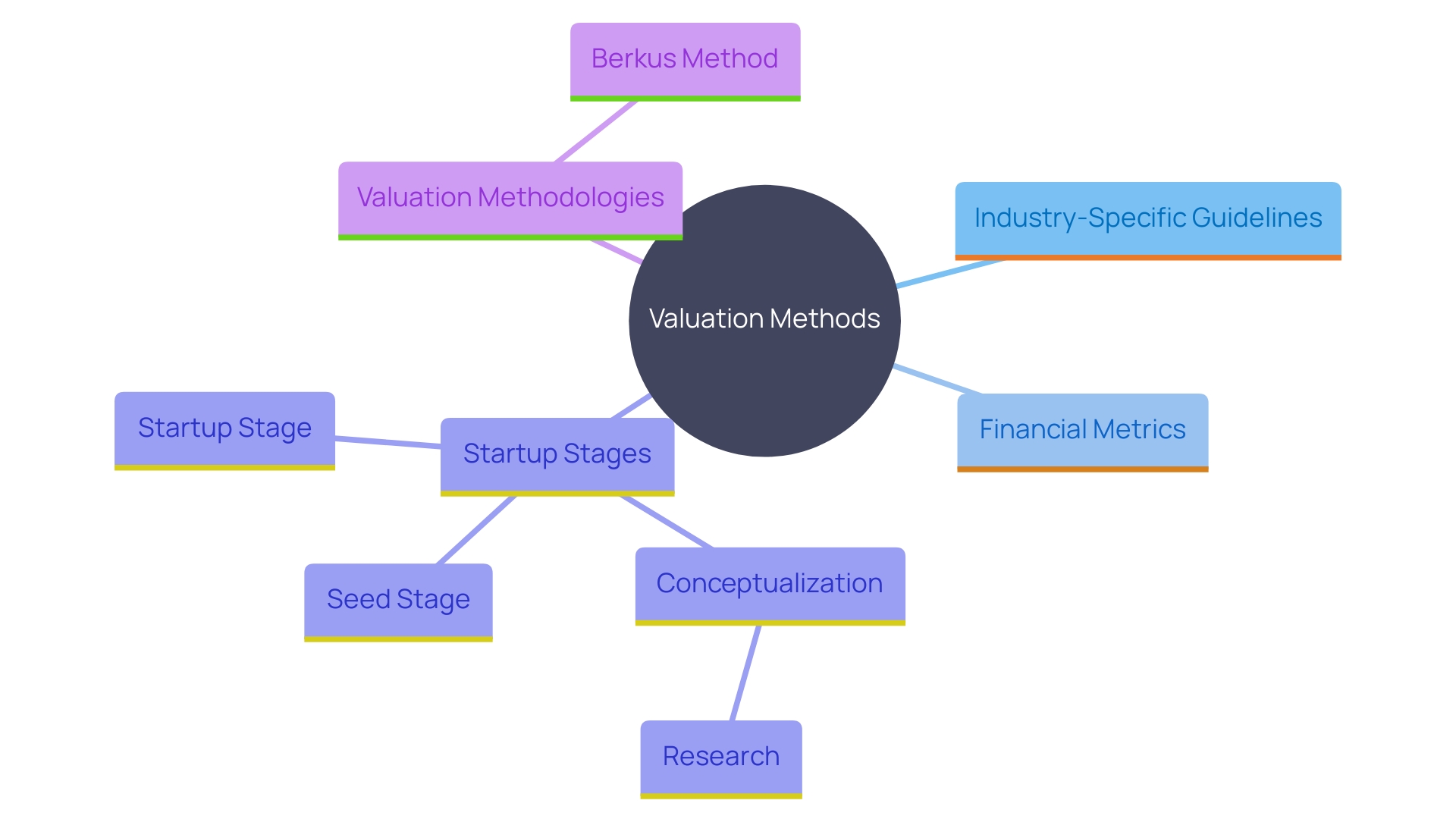
Who Pays for a Business Valuation?
In business appraisal situations, the expense burden falls on the business owner who requests the assessment.. There are cases where negotiations can result in the buyer taking on these costs. For instance, in mergers and acquisitions, purchasers may opt to cover appraisal costs to ensure a seamless transaction process. This choice is often driven by the importance that buyers attach to the acquisition, which may outweigh the upfront costs involved.
Understanding who bears the expense of the assessment is crucial as it can affect how and when you proceed with obtaining an appraisal. Doug Bend from Bend Law Group recommends that knowing your target price from the beginning can help you decide if it is sensible to proceed with the often expensive and time-consuming assessment process. Furthermore, it's important to consider how negotiations unfold and how purchasers might utilize cost assessments as a bargaining tool during deal discussions.
By taking these factors into account in your plan can not just control. Also synchronize the interests of both sides. Leading to a smoother transaction overall.
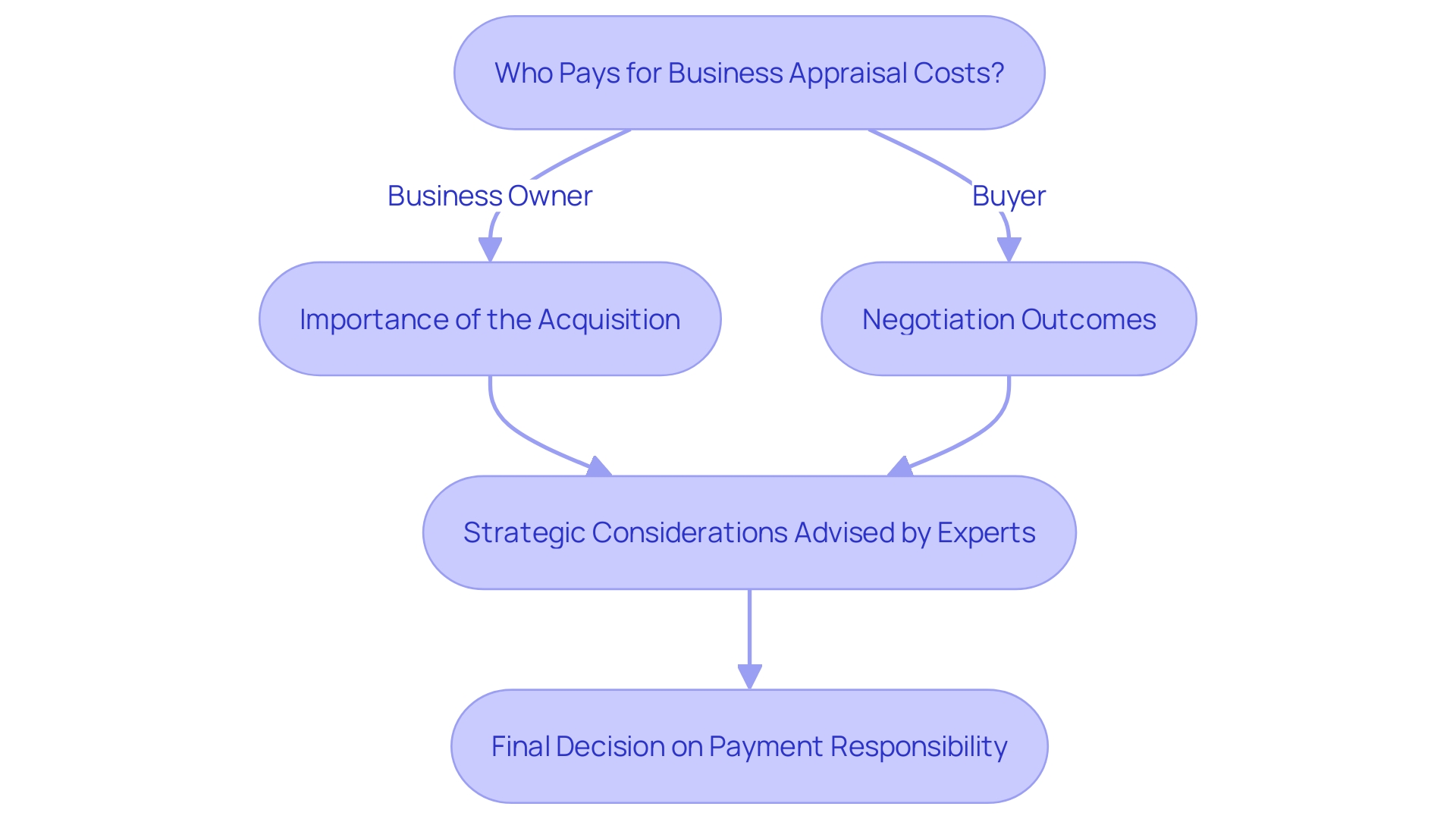
How Long Does a Business Valuation Take?
The duration required to perform an assessment of an enterprise can vary significantly based on elements, such as how complex the organization is and which appraisal method is utilized. These assessments typically last from a day to several weeks. It's crucial to have all the documentation organized and possess a solid understanding of the operational specifics of the enterprise to accelerate the assessment process.
In the shifting landscape of business assessment techniques are key players in determining worth creation and potential growth opportunities for companies at different stages of development like startups which rely heavily on various factors such as their progress and data availability from the inception of an idea to the point where funding is needed to bring that idea to life each step demands a unique assessment strategy methods such as the Scorecard Assessment Method present a structured approach to evaluating fledgling businesses by taking into account both measurable and intangible aspects. The Cost, to Duplicate Approach also considers the importance of both intangible assets when determining the value of a startup and offers valuable insights into its worth by assessing the resources needed to recreate them.
Understanding these methods and the factors that influence them, such as market conditions and the power of property, can simplify the assessment process. As the company advances through phases from initial growth to expansion it may be necessary to modify the valuation technique to mirror its present state accurately. This comprehensive approach ensures that stakeholders can assess an enterprise's worth with precision and confidence.
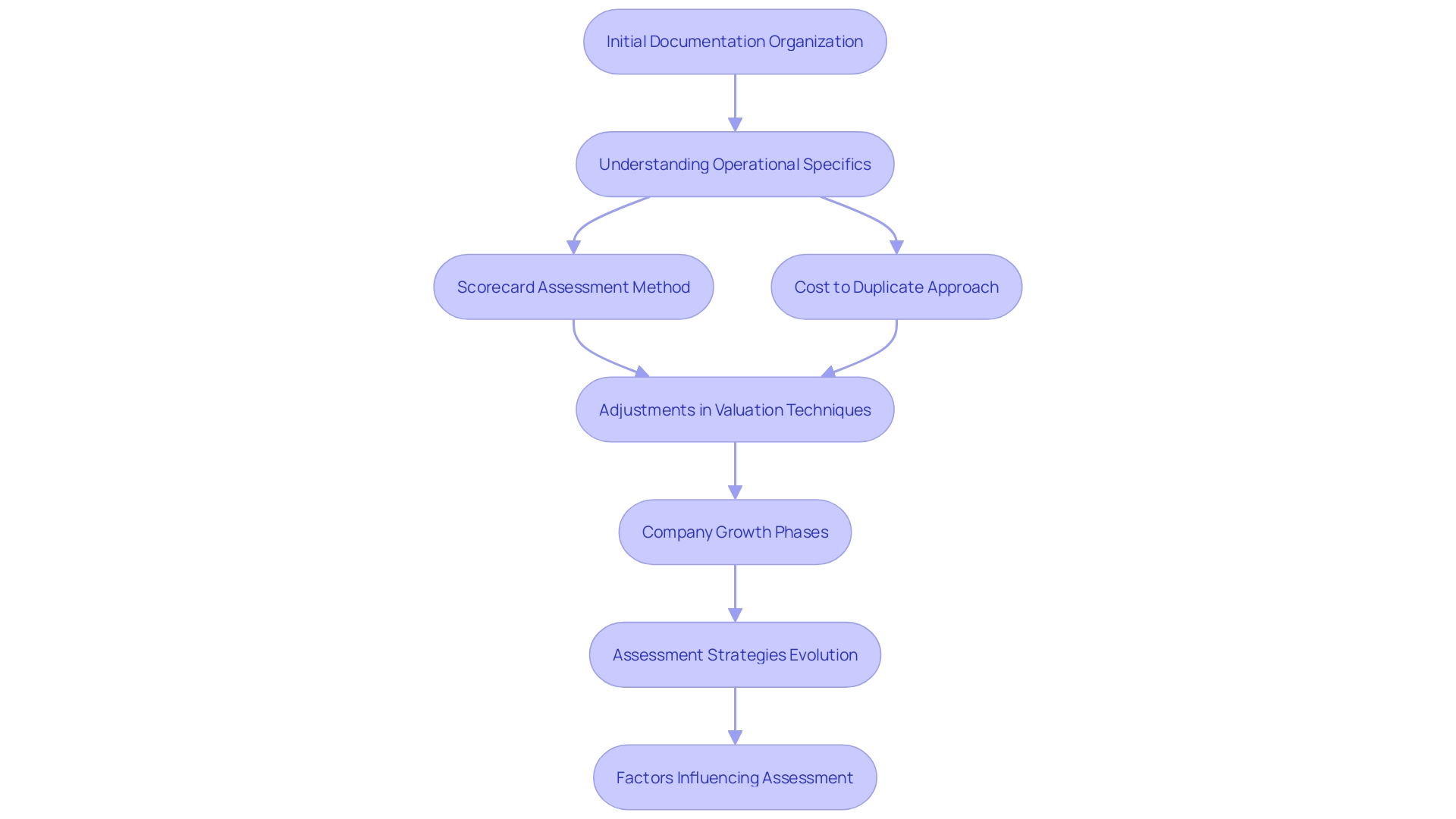
Common Challenges in Business Valuation
Evaluating the worth of an enterprise can present difficulties throughout the process. Unclear financial records can cloud the financial status of a company making it tricky to provide accurate evaluations. Market instability also comes into play as changes in conditions can swiftly impact a business worth. Subjective judgments add another layer of complexity especially when appraising assets or future growth prospects. For instance the downfall of WeWork due to its expansion plans and subsequent bankruptcy serves as a cautionary tale, about the dangers of overestimating market competitiveness and overlooking potential market disruptions. Assessing a software company standing in the market entails examining its market share trends and growth patterns alongside its edge involving brand awareness and customer loyalty rates significantly; additional scrutiny is necessary for revenue streams volatility particularly those tied to subscription based or licensing fees to guarantee long term financial stability; understanding these intricacies and planning ahead to tackle them are crucial, for achieving a favorable valuation result.
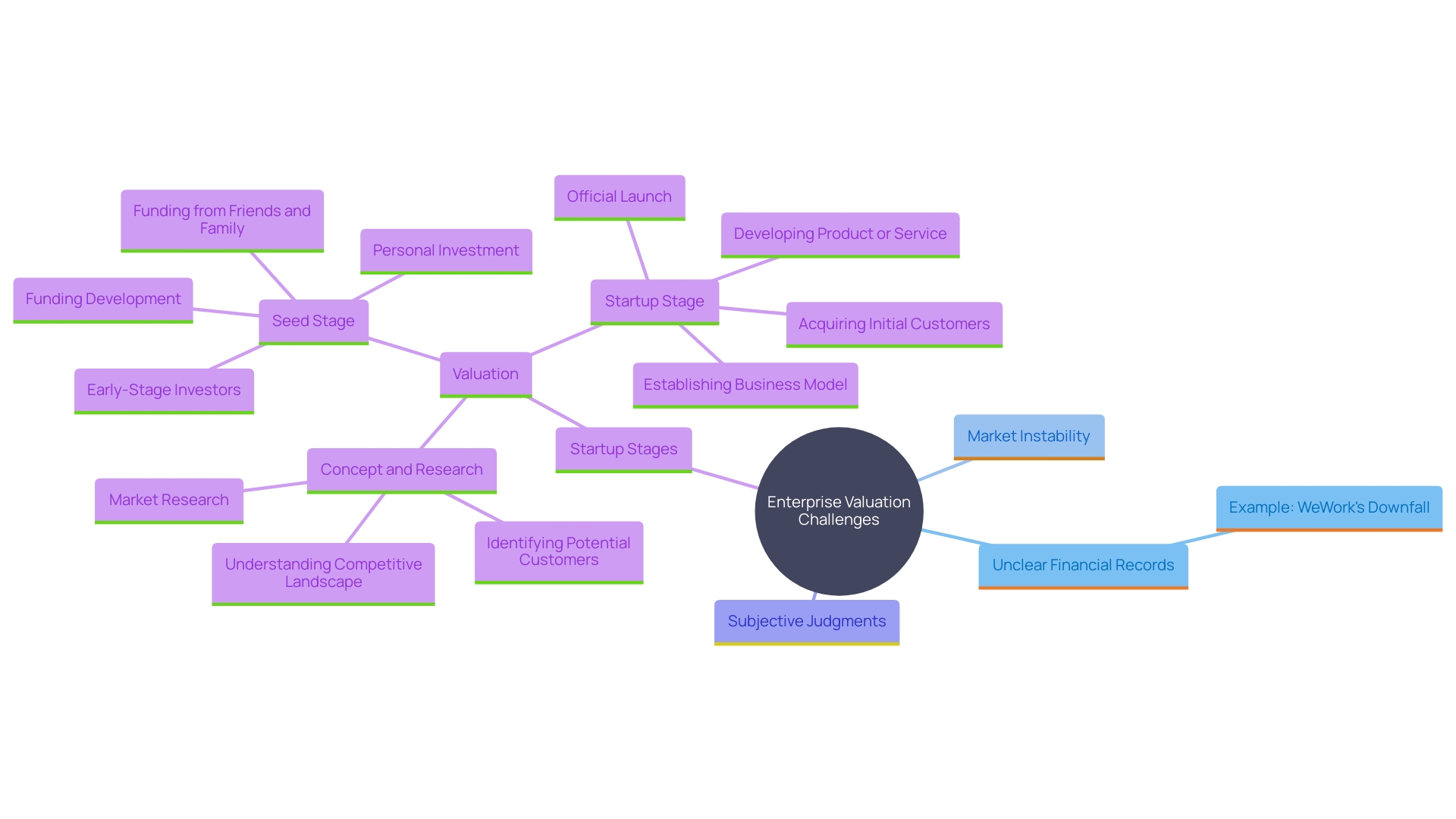
Conclusion
It's crucial for entrepreneurs and investors to grasp the importance of business valuation as it sheds light on the companys strengths and weaknesses while guiding decision making for success and improved financial outcomes. Practical instances like the changes in insurance strategy for a steel recycling company showcase the advantages of comprehensive evaluations and underline the need for flexibility, in an ever evolving market environment.
Different ways exist for determining the value of a company – ranging from the Berkus Method used for startups to the Discounted Cash Flow method for established businesses – emphasizing the importance of customized approaches depending on a companys stage of growth and industry specifics. Understanding the elements that impact valuation expenses such as business complexity and the method chosen empowers business proprietors, with the insight needed to adeptly manage their financial tactics.
Furthermore grasping the intricacies of determining which party incurs the expenses associated with appraisals and the duration needed for this procedure introduces an aspect of tactical decision making. By foresee obstacles like incomplete financial documentation or fluctuations, in the market individuals involved can enhance their readiness to address possible obstacles in attaining a precise evaluation.
In essence meticulously assessing a companys value not reflects its current worth but also acts as a valuable asset for future expansion and discussions. By adopting these perspectives and techniques businesses can set themselves up for lasting achievement and financial gain, in a changing market.




